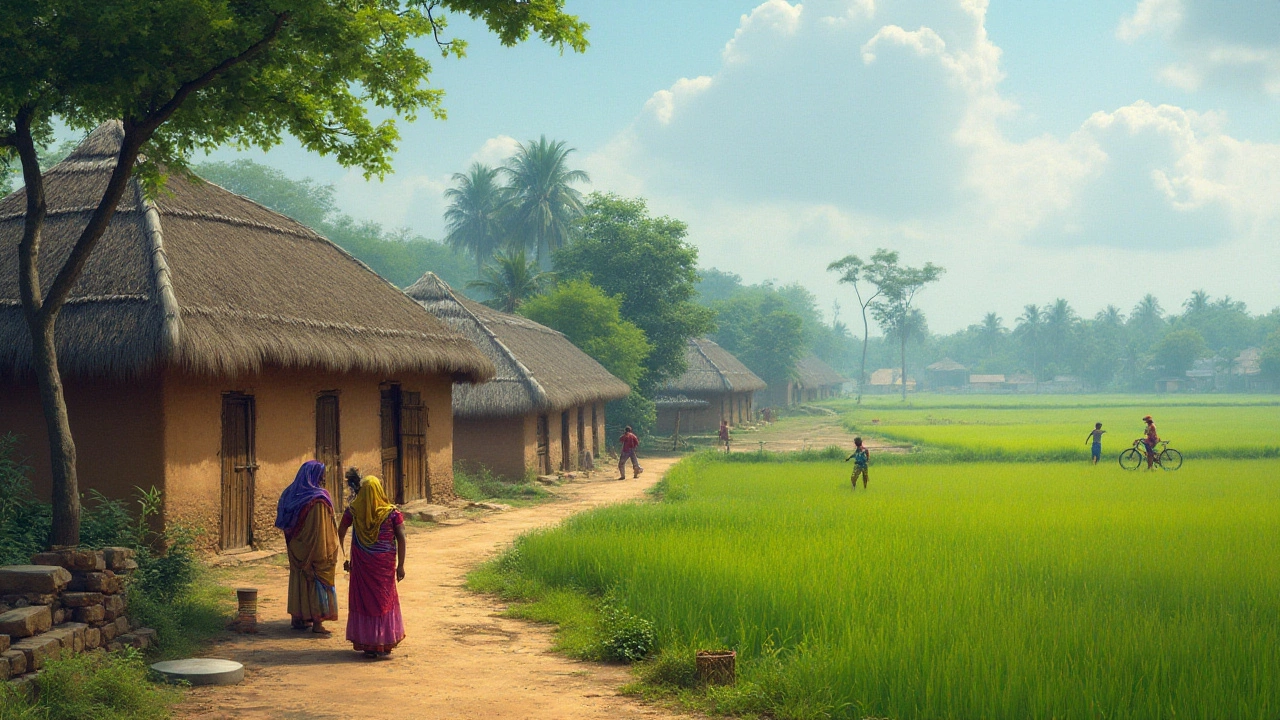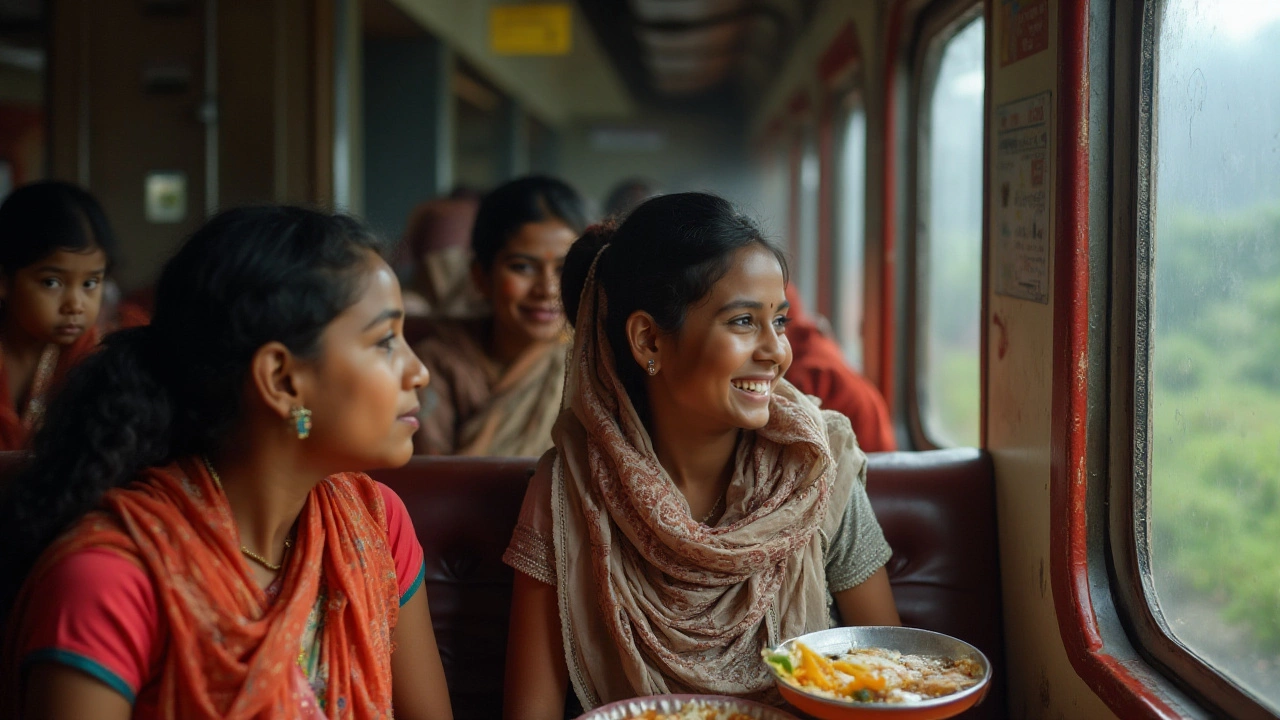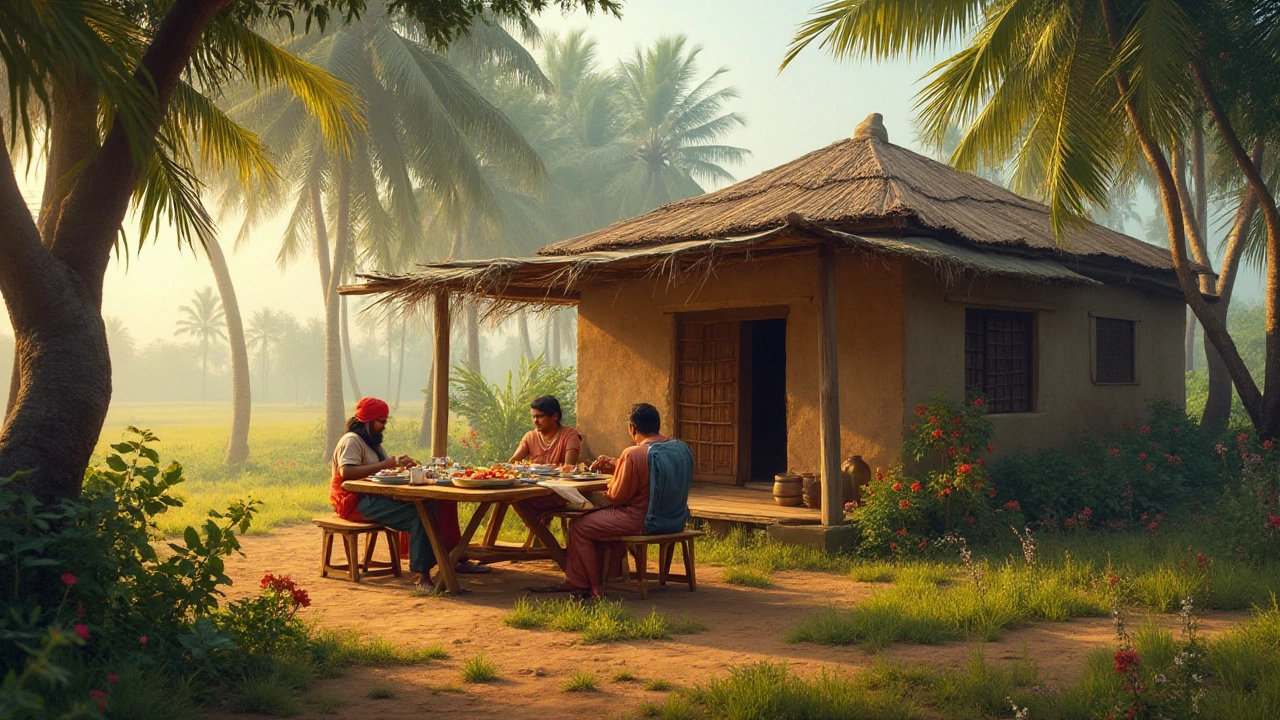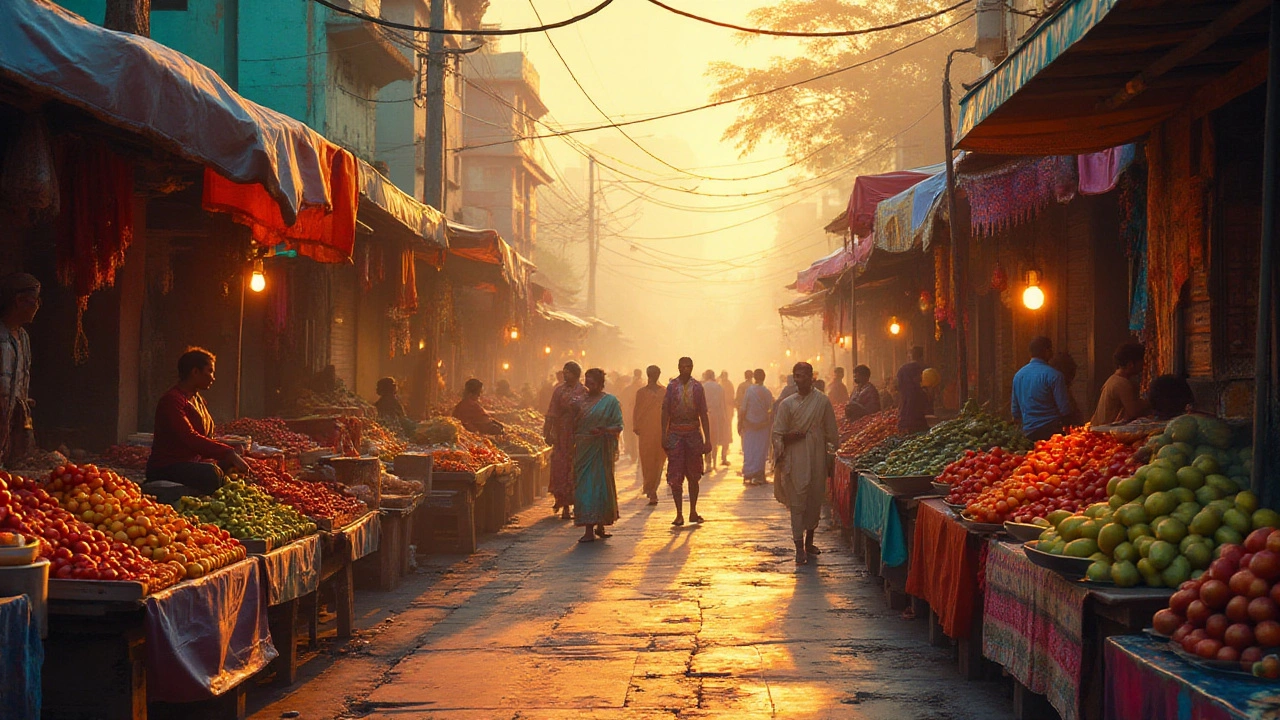Traveling through India on a shoestring budget doesn't mean missing out on its rich tapestry of experiences. With 500 rupees in your pocket, you might be surprised just how far you can stretch your travel adventures.
Understanding the value of a rupee is pivotal for a savvy traveler, and India offers an array of options that make the most of tight budgets. From riding local buses to relishing street food delicacies, there's an art to budget travel within this colorful country.
In the bustling markets and serene villages alike, the thrifty traveler can uncover India’s treasures without overspending. Through a careful balance of indulgent experiences and economical choices, every journey can be an unforgettable one.
- Transportation: Getting Around on a Dime
- Savoring Local Flavors: Affordable Eats
- Budget-Friendly Accommodation Options
- Experiencing Culture Without Spending a Fortune
Transportation: Getting Around on a Dime
Exploring the vast and varied landscapes of India doesn't have to break the bank, especially when it comes to budget travel. With a bit of planning and a willingness to embrace local experiences, getting around economically becomes an exciting part of the adventure. The country boasts a comprehensive network of public transportation options tailored to cater to every traveler’s budget.
One of the most economical ways to navigate cities is by using public buses. Public buses are ubiquitous and offer an authentic glimpse into the daily lives of locals. The cost of single rides rarely crosses the 20-rupee mark, making it a steal for budget-conscious travelers. For those seeking a faster commute, local trains, especially in metropolitan hubs like Mumbai, provide another cost-effective alternative. They feature special compartments for women during peak hours, ensuring safety and comfort for female travelers. Intra-city trains are the lifeblood of local travel and cost only a fraction of private transport. The metro systems in cities like Delhi and Bengaluru echo this sentiment, providing air-conditioned carriages at nominal rates.
When venturing between towns or cities, travelers can find extraordinary value in India's sprawling railway network. Booking a sleeper class ticket allows one to see the countryside glide by from the comfort of a quaint train carriage without the strain on the wallet. Reservation in advance through the IRCTC website or mobile app ensures a smooth journey. Alternatively, government-operated bus services such as the Rajasthan State Road Transport Corporation or the Kerala State Road Transport Corporation offer extensive services that connect both popular and off-the-beaten-path destinations.
For shorter distances or more direct routes, auto-rickshaws, often referred to as tuk-tuks, provide an affordable and convenient option. Though the fare is typically negotiated beforehand, they remain among the cheapest private transport modes in India. However, pricing can fluctuate widely based on time, location, and negotiation skills, so a friendly haggle often brings down the costs significantly. In addition, app-based rides from companies like Ola and Uber have grown in popularity. Their competitive fares, along with their transparent pricing system, help keep travel costs predictable and manageable, providing an excellent balance between convenience and thrift.
"The best way to see a city affordably while soaking in its culture is often by taking public buses or local trains," suggests Deepak Jain, travel enthusiast and blogger. He continues, "It's not only about saving money but also about experiencing the environment and interacting with everyday life."
A unique mode of transport specific to certain regions are cycle-rickshaws and pedal-powered alternatives, particularly prevalent in areas like New Delhi's Chandni Chowk. These are perfect for short and leisurely rides through narrow lanes and bazaars. As you engage in these localized forms of transportation, you're likely to discover hidden gems, from street food stalls to spontaneous cultural performances, all for less than it costs to brew a cup of coffee back home.
To illustrate the cost-effectiveness of these choices, consider the example of traveling from Jaipur to Delhi. With options including a bus ride at approximately 300 rupees, a sleeper class train ticket for under 200 rupees, or a shared cab that might split to 500 rupees per head, travelers can choose what suits them best. It's this range of affordable travel options in India that empowers travelers to weave rich, memorable journeys through this multifaceted nation.

Savoring Local Flavors: Affordable Eats
Exploring India’s culinary landscape on a budget is a delightful adventure, as the country is home to a myriad of delicious and affordable dishes. Street food, in particular, offers an authentic taste of India’s rich and diverse gastronomy, accessible to locals and travelers alike. Stalls on bustling streets in cities like Delhi, Mumbai, and Kolkata offer everything from spicy chaats to piping hot samosas, ensuring that every meal is a celebration of flavors. With just 500 rupees, a traveler can enjoy multiple meals a day, sampling the rich diversity of India’s regional cuisines without straining their budget.
The key to affordable eating in India lies in the vibrant world of street food. Vendors often operate near busy markets and popular city hangouts, serving quick bites at remarkably low prices. For instance, a plate of pani puri or bhel puri can be had for as little as 20 to 50 rupees. Travel budget India enthusiasts recommend trying pav bhaji in Mumbai, a spicy vegetable mash paired with buttered bread, or dosa in southern states, which are crispy rice pancakes often stuffed with vegetables and served with chutneys. These savory delights not only satisfy hunger but also offer insight into local cultures and traditions.
According to Anubha Singhania, a reputable food critic, 'Indian street food is not just about satisfying hunger; it's an exploration of culture with every bite.'
Beyond street vendors, countless small eateries provide hearty meals without a hefty price tag. Known locally as 'dhaba' in the north or 'mess' in the south, these locations whip up home-style cooked meals that are both nutritious and easy on the purse. Thalis, a plate filled with rice, dal, vegetables, and a variety of sauces and chutneys, serve as the ultimate tool for a culinary exploration of a region’s staples, often costing between 100 to 200 rupees. The incredible value of such meals ensures that travelers from all backgrounds can enjoy the best local flavors.
Markets and food stalls in every corner of India bring a chance to interact with locals and learn more about the traditions tied to specific foods. Fresh vegetables, exotic spices, and an array of sweets are not just items on sale but stories of regions. By engaging in friendly banter with the vendors themselves, travelers can gain much more than just a meal. This personal connection has the power to elevate any travel experience, transforming a mere transaction into a memorable cultural exchange, all while maintaining tight control over their travel budget India. With an open mind and a few rupees in hand, the culinary wonders of India are just waiting to be discovered.

Budget-Friendly Accommodation Options
Finding the perfect place to rest your head without digging too deep into your pockets is an essential part of budget travel in India. The country is home to a myriad of accommodations that cater to the frugal traveler, offering comfort and value in equal measure. Hostels are an excellent choice for those looking to meet fellow travelers and enjoy a communal atmosphere. Chains like Zostel and Backpacker Panda have become popular for their clean facilities, vibrant atmospheres, and pocket-friendly pricing. These hostels often host events, helping you engage with the local culture without spending much. Dorm rooms in such hostels can be as cheap as 300 INR per night, making them viable options for long-term backpackers.
Guesthouses and homestays also present fantastic opportunities to immerse yourself in local life while enjoying the comforts of home. Homestay hosts often offer insider tips on the best places to eat and visit, giving you a more authentic experience than a guidebook ever could. For a unique touch, families may invite their guests for home-cooked meals, showcasing the regional cuisines that India is so proud of. Picture savoring a traditional thali in a rustic homestead while swapping travel tales with your host; such experiences are invaluable. Interestingly, Airbnb has also made its mark in India, providing a wide range of stays from modern apartments to culturally inspired cottages.
Another viable option is the local hotels scattered across cities and towns, which may not be as modern as upscale hotels, but they often offer basics at a fraction of the cost. A room in such establishments might range from 400 to 800 INR per night, depending on the location and season. Though simple, these hotels typically provide essential amenities like clean bedding, bathrooms, and sometimes Wi-Fi access. When picking a local hotel, reading reviews and booking via trusted platforms, such as Booking.com or ClearTrip, can safeguard you from unpleasant surprises.
"In India, hospitality is really about managing expectations and helping people live like locals. Once you get acclimated, everything falls in place," said a seasoned traveler in a Lonely Planet article.
Camping is another adventurous and cost-effective way to explore India's diverse landscapes. In areas like Rishikesh or Himachal Pradesh, you can rent camping gear or connect with eco-friendly campsites nestled amidst nature's bounty. The freedom to sleep under the stars and wake up to melodious birdsong is an experience unmatched by any five-star hotel. Camping not only reduces your accommodation expenses significantly but also offers an escape into tranquility, away from the urban hustle.
Budget travel in India is all about embracing flexibility and adventure. By tapping into different accommodation options, travelers can discover more of the country's hidden gems without the financial strain. Whether mingling at hostels, immersing in local life through homestays, or finding solitude in wilderness campsites, India's accommodation diversity is its strength, catering perfectly to the curious and budget-conscious traveler.

Experiencing Culture Without Spending a Fortune
Immersing yourself in the vibrant culture of India is one of the hallmarks of travel in this diverse country. The good news is, you don't need a hefty budget to soak in the Indian cultural tapestry. With around 500 rupees, you can engage in an array of activities that are as enriching as they are affordable. The key is knowing where to look and being open to the wealth of experiences at your fingertips. Local festivals are a fantastic entry point; they're often free and offer a sensory feast of music, dance, and culinary delights. Traversing the bustling streets during a festival is like stepping into a living painting, with color and joy streaming every inch of space.
Free walking tours are another great way to dive deep into the cultural lanes of India. Many cities, including the likes of Mumbai and Delhi, have groups that offer guided tours at no cost, except perhaps a small tip at the end. These tours will unravel stories of bygone eras, uncovering historical nooks that tourists might overlook. They're fantastic opportunities to learn, making them a staple on any budget traveler's itinerary. Heritage walks often cover enchanting old city areas, inviting you to explore the faded grandeur through a knowledgeable guide's narrative. You're not just a tourist then; you become a part of the city's ongoing story.
'The best things in life are often the people we meet, the places we've been, and the memories we've made along the way.' - Anonymous
For a more serene cultural indulgence, visit temples and other places of worship scattered throughout the country. Each holds unique tales of history and spirituality, and entry is typically free. From the intricacies of Hindu temples to the tranquility of a Sikh Gurdwara, visitors witness diverse architectural marvels and ancient traditions. It’s here that you’ll find the true spiritual heartbeat of India, where centuries-old rituals are still alive today. Participating in a Langar, the free community meal served in Sikh Gurdwaras, offers both delicious nourishment and a warm welcome.
Engaging with locals is one of the richest cultural exchanges you can have. The spontaneous conversations with vendors in markets or fellow travelers on a train can unveil stories and insights worth more than gold. India’s generous hospitality is legendary, and many visitors are often invited to join family gatherings or local events. The experience is genuine and serves as a beautiful reminder of the country's diversity and warmth. Never underestimate the power of a shared smile or laughter; it transcends language and leaves a lasting impact on both giver and recipient.
If you’re someone who enjoys quiet contemplation with nature while absorbing the culture, visit the parklands and gardens that India treasures. Such spaces often hold statues and other art pieces, giving you a taste of local artistry and monument design without ceasing your flow with nature. Attending art galleries and local exhibitions is also advisable because most charge a symbolic entry fee or nothing at all. Supporting local artists who display their handicrafts can provide an alternative, non-expensive way to bring a piece of India’s creative spirit back home.
Markets are not only for shopping but are vibrant cultural hubs. Places like the Jaipur bazaars or Kerala’s spice markets expose you to a sensory overload of sights, sounds, and smells. Even with a tight budget for purchases, the experience itself is enlightening; engage with the sellers and learn about the origins of their products. In India’s markets, every item has a story behind it. Keep an eye, too, on street performers who turn roadsides into dynamic stages, as this form of impromptu theater is some of the best free entertainment you'll come across.
